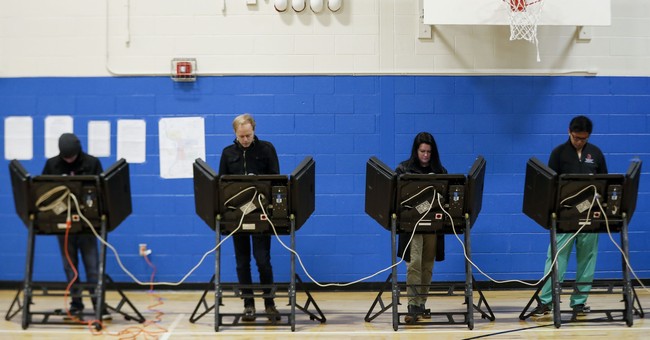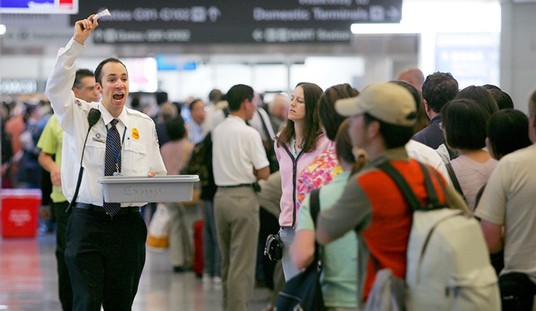
When I first came across this story in Bloomberg several months ago, it was a very eye-opening explanation of what Donald Trump’s 2016 Presidential victory revealed — especially in Wisconsin.
I had has been a more traditional GOP supporter in the Ted Cruz camp — I did not take Trump’s candidacy seriously until after the primary voting had begun.
But several months earlier my first “heads-up” that something might be stirring beneath the building Trump momentum came from my elderly parents, who were at the time both in their late 70s. They had attended a Trump campaign event in the late fall of 2015. They had never been that interested in politics other than on a local level. But they both told me in repeated calls that they were supporting Trump.
My parents had owned and operated several businesses over 50 years of marriage. Neither had attended college, and they lived in the same mid-sized city for the entirety of their lives. But they become increasingly disillusioned with the turn of the state to very liberal politics starting around the second term of Bill Clinton. Donald Trump’s blend of conservatism and populism was exactly what they had been waiting to hear for 20+ years.
But my next eye-opener was even more dramatic. My very “black and white”, “law and order” conservative wife is not terribly interested in politics — but she has it on “in the other room” in the sense that she understands what is happening but not caring too much about it most of the time. One day in early 2016 I engaged her on the topic of my preference for Ted Cruz. She furrowed her brow and said, “To married women, he reminds them of what an ex-husband might be like.” That was sort of a bullet between the eyes in a manner of speaking. Then she said that none of the establishment candidates were attractive to her, but she liked Trump.
That was STUNNING. I would have never guessed it. She said “I think he’s probably a bad husband, and I would have never dated someone with his personality, but in the field he’s the only one who strikes me as “strong” and a true leader.” She went on to say that GOP politics had been destroyed by people who never actually did what they promised. National security is a big issue for her, and she believes both parties have done horrible damage with foreign and economic policy over the past 20 years. Trump’s message of “America First,” combined with a domineering personality, was music to her ears. He was someone saying what she wanted to hear, and with a background of making decisions and getting things done.
She is a wife and mother, college-educated, with three decades of work in a professional environment at the very top of what she does. When I mentioned to her that college-educated single women were among the most anti-Trump groups she said “In 30 years in the workspace where I have been in, there is no more selfish and self-centered person than a college-educated single woman. Their entire world view is oriented around how they are impacted by events. I have more in common with married women who are minorities with backgrounds 180 degrees different than mine because we share common concerns about the world — how our families are being impacted.”
In reading this Bloomberg story on Wisconsin voting in 2016, those views of my parents and wife came rushing back. The story concerns a study done by Democrat analysts who live and work in Wisconsin, trying to figure out how the model which had worked so easily for Obama in 2008 and 2012, had been shattered by Trump in 2016. Numerous counties in rural Wisconsin that had voted twice for Obama had abandoned Clinton to vote for Trump.
One of the first observations was that Wisconsin has been moving to the GOP over a long period of time, and Obama was really an aberration from that movement. In 2000 Gore beat Bush in Wisconsin by less than 6000 votes. Kerry beat Bush in Wisconsin in 2004 by approximately 11,000 votes. But along with voting for Obama twice by decent margins, Wisconsin also elected Scott Walker — conservative — as Governor, re-elected him, as well as electing liberal Tammy Baldwin as Senator. In order, Wisconsin voters selected in state-wide contests Obama-Walker-Trump-Baldwin.
The article notes there are two schools of thought on why Trump was able to pull out a narrow win.
The first interprets Trump’s 2016 victory as a final, desperate lunge by white Christian conservatives seeking to retain the racial, sexual and class hierarchies of the 20th century. Pollster Stanley Greenberg is prominent in this camp, arguing that Trump’s coalition is tapped out and that the erosion of his support since 2016 among educated whites and non-college-educated white women dooms him in 2020…..
Do a little better in the right places. Given the narrow margin of the 2016 defeat — a function solely of the Electoral College since Clinton won the national popular vote by almost 3 million — there’s a demographic smorgasbord of targets for Democrats in 2020. Everyone knows what they are in Wisconsin.
But the less sanguine view is that Wisconsin turning around was akin to a big ship turning in the ocean — once that is accomplished it heads off in a new direction. In this case, the turn and the direction involves the impact of “first time voters” — and that does not mean just young voters who are only eligible for the first time.
After the 2016 debacle, Vinehout and Kane zeroed in on another species of voter who contributed to the surprise: rural white men who were not regular voters. “I called up the clerks. I called up the poll workers. I wanted to know what happened,” recalled Vinehout in a telephone interview. What the clerks and poll workers told her was that a number of Wisconsinites who voted in 2016 were new faces. In rural counties like Buffalo, Vinehout said, “ward-level data shows that a lot of people came to the polls for the first time.”
Some Democrats fear that Trump has the equivalent of reserve troops — non-college-educated white males who didn’t vote in 2016 but who, after four years of Trump’s domination of media, political culture and the very oxygen we all breathe, might turn out in 2020.
In three counties in this southwest corner of the state, each of which flipped from Democrat to Republican, same-day registration jumped from 2012 to 2016 — up 22% in Vernon County, up 40% in Crawford, up 54% in Grant. “They were in their 20s, 30s and 40s, and they were farmers and they were mostly men,” Vinehout said of the new voters. “And they voted for Trump.”
Here is the nightmare keeping Democrats awake — the possibility of the following that they cannot predict:
[W]hat if Trump represents not a last gasp of cultural and racial revanchism but a new wave? What if the trickle of white men who voted for the first time in years in Wisconsin in 2016, despite widespread predictions that Trump’s candidacy was doomed, is followed in 2020 by a wave of previously nonvoting white males who conclude that Trump’s brand of tribal aggression is at last something worth voting for?
The universe of nonvoters is vast. Nationwide, 4 in 10 of those eligible did not vote in 2016. According to Brookings Institution demographer William Frey, more than 21 million nonvoters in 2016 were non-college-educated white men, Trump’s base. In Wisconsin, which is 81% non-Hispanic white, 459,000 non-college-educated white men didn’t vote in 2016. Trump won non-college-educated white men nationwide by an astounding 50 points. A modest rise in their turnout in key states in 2020 could swamp the Democratic nominee.
The HUGE problem for polling is “How do you poll a previous “non-voter”? You can’t fit “non-voters” into a poll of “likely voters” because one of the pollster’s questions is “How often have you voted in the past?” People who answer “Never” are generally excluded from “Likely voter” polls. Trump wins non-educated white male voters by 50 points — something like 75-25. In Wisconsin, only 2 in 10 of them who did not vote in 2016 show up in 2020 which is another 70,000+ Trump votes. Where does Biden get the 22,000 he needs to eliminate the gap Hillary lost by, AND another 75,000 votes in addition to that? They likely aren’t available. Wisconsin may already be gone.
This same demographic bomb exists in states like Michigan, Minnesota, Iowa, Virginia, and North Carolina. Those states may be lost already, or on the brink, due to the “hidden” Trump voter who has never voted before.
Betting markets say this is an even race — after having it wildly in Biden’s favor mid-summer. Polling which had Biden 10 points ahead just 6 weeks ago, now says the race is even or very close.
But neither predictor can predict the unknown? How many people who have never voted before some to the conclusion that what they have seen and heard from Pres. Trump the past four years is something they want more of?














Join the conversation as a VIP Member